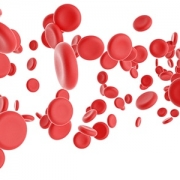Omics: A cut-out-and-keep guide
You might already know about the genome, but what of the other ‘omes’ that affect our health – from the microbiome to the epigenome?
At a recent conference organised by the PHG Foundation, Professor Sir Mark Caulfield, Chief Scientist and Interim Chief Executive at Genomics England, talked about ‘integrated multi-omics’ and Professor Dame Sue Hill, Chief Scientific Officer for England, talked about the ‘human panorome’. But what do they mean?
An era of ‘multi-omics’
Simply put, ‘omics’ means studying the totality of specific factors within a cell, tissue or organism. So ‘genomics’ is the study of all the DNA, ‘transcriptomics’ all the RNA, and so on.
In Professor Caulfield’s keynote presentation, the phrase ‘integrated multi-omics’ was used to refer to the combination of information from four areas: the genome, transcriptome, proteome and metabolome.
Being able to apply information from a combination of these fields is seen by many to be the holy grail in healthcare.
The ‘omes’ that impact our health
Genome
A genome is a complete set of DNA from an organism. The genome of a person includes both the DNA from the chromosomes in the nuclei of their cells and the DNA of the mitochondria in their cells.
Transcriptome
Transcription is the process via which DNA is copied into RNA, so the transcriptome refers to RNA present in cells. This can include messenger RNA – which transmits the instructions for building a protein from the gene where the instruction is stored to the ribosome where proteins are assembled – as well as other pieces of RNA that act as regulatory elements within the cell.
As with other omes, the transcriptome can be defined at the level of a single cell, of a tissue or of an entire organism, and can be very different in different tissue types within one individual. Some RNA will be common to most cells, while other RNA will perform specialist functions that are only needed in one cell type.
Proteome
Refers to all of the protein molecules within an organism. Different proteins will be expressed in different cells of the human body, and the proteome can be defined at cellular, tissue or whole-body levels, rather like the trancriptome.
Metabolome
The term metabolome encompasses the low-molecular-weight compounds in cells, including sugars, nucleotides, amino acids and lipids – the ‘building blocks’ of more complex molecules like proteins, fats, carbohydrates, DNA and RNA. The metabolome can also include small signalling molecules such as hormones, which play important roles in communication within the body.
Professor Hill referred to the ‘human panorome’ as encompassing these, plus three other omes: the microbiome, epigenome and exposome.
Microbiome
The microbiome consists of the combined genomes of all the microorganisms that live on and in our bodies. The microbes are predominantly bacteria but there are also protozoa, viruses and fungi. Each human body contains a similar number of microbial cells and human cells, although the microbes only make up 1-3 percent of our body weight because they are usually much smaller than our own cells. Read more about the microbiome here.
Epigenome
The epigenome refers to processes that don’t affect the content of the genome (the actual DNA sequences), but that do influence whether a given gene can be read and can have effects. An underlying DNA sequence might be the same in two people (or in two cells or two tissues within one person), but the resulting characteristics might be different because a gene has been inactivated in one and not the other. This can happen in different ways. Two well-evidenced forms of modification that can inactivate genes in this way are methylation and chromatin accessibility; you can read more here.
Exposome
The exposome is something of a catch-all term for environmental factors that affect us throughout our lives. These include pollution and lifestyle choices including exercise, food and smoking.
–









